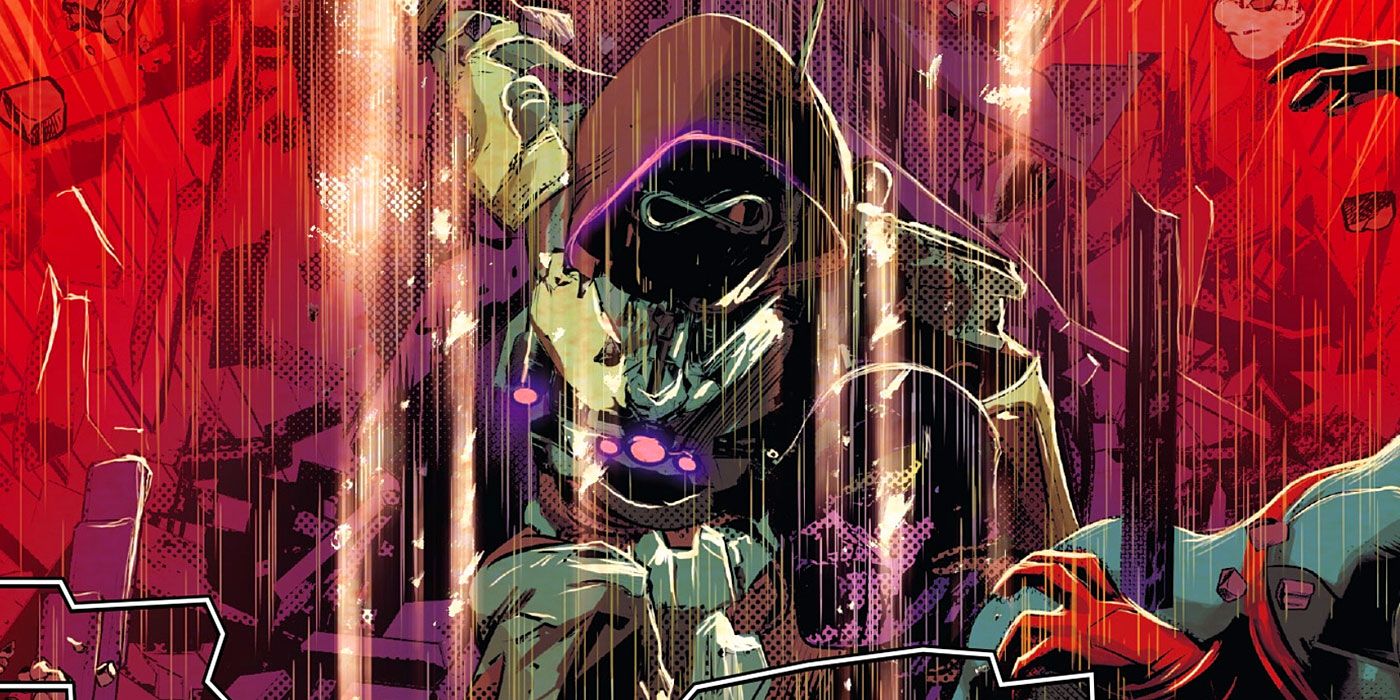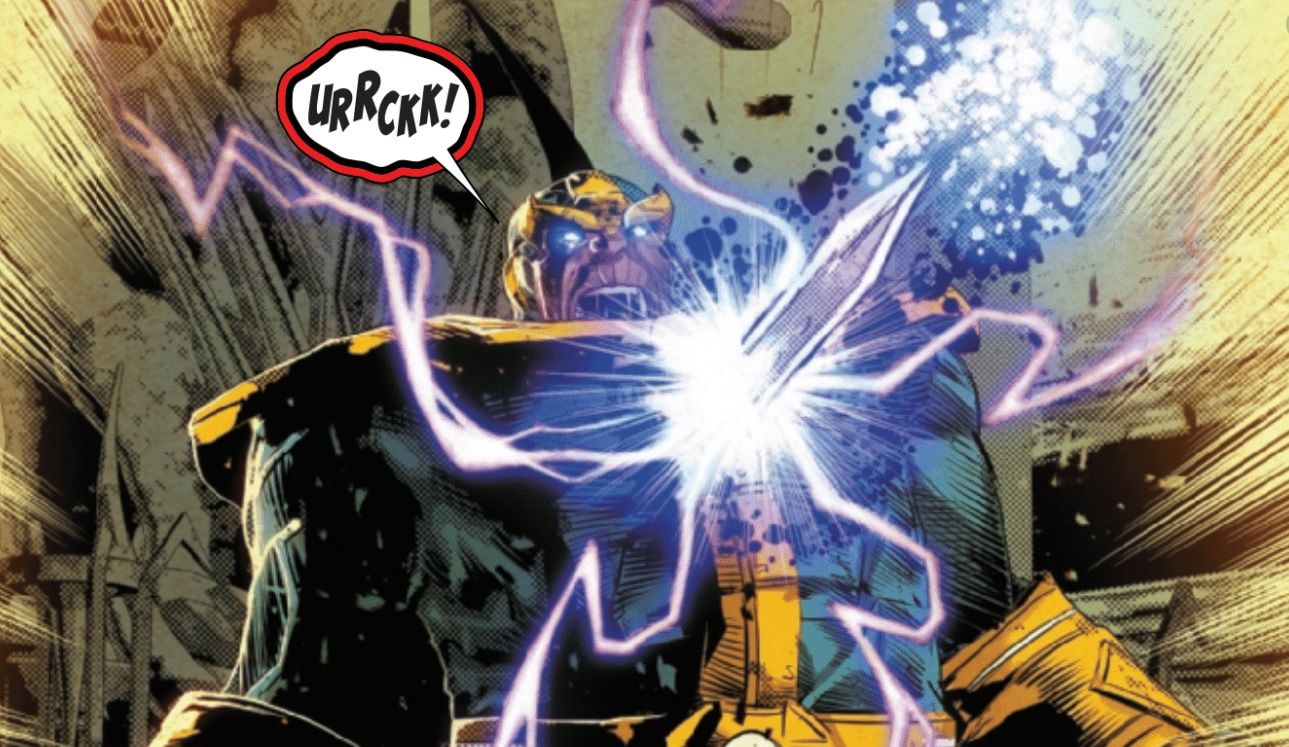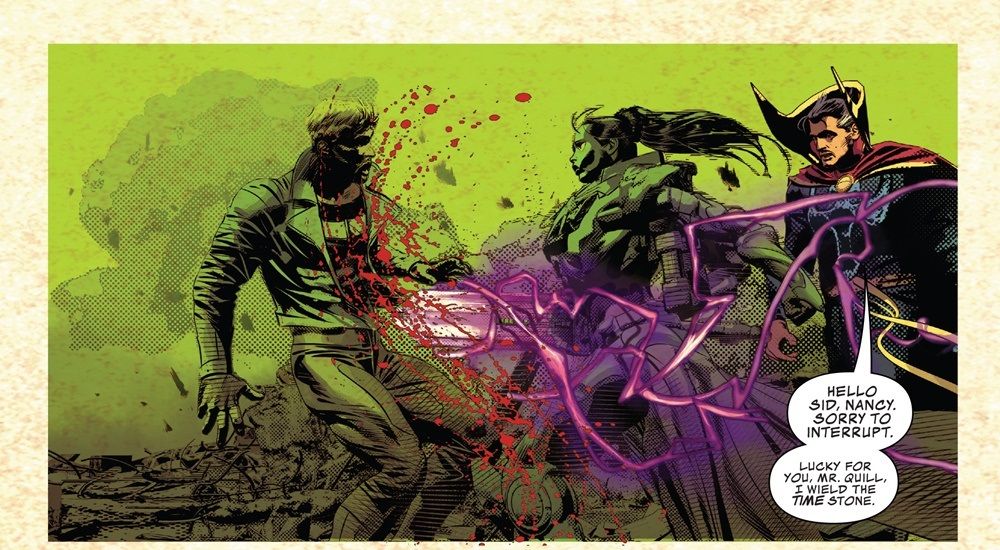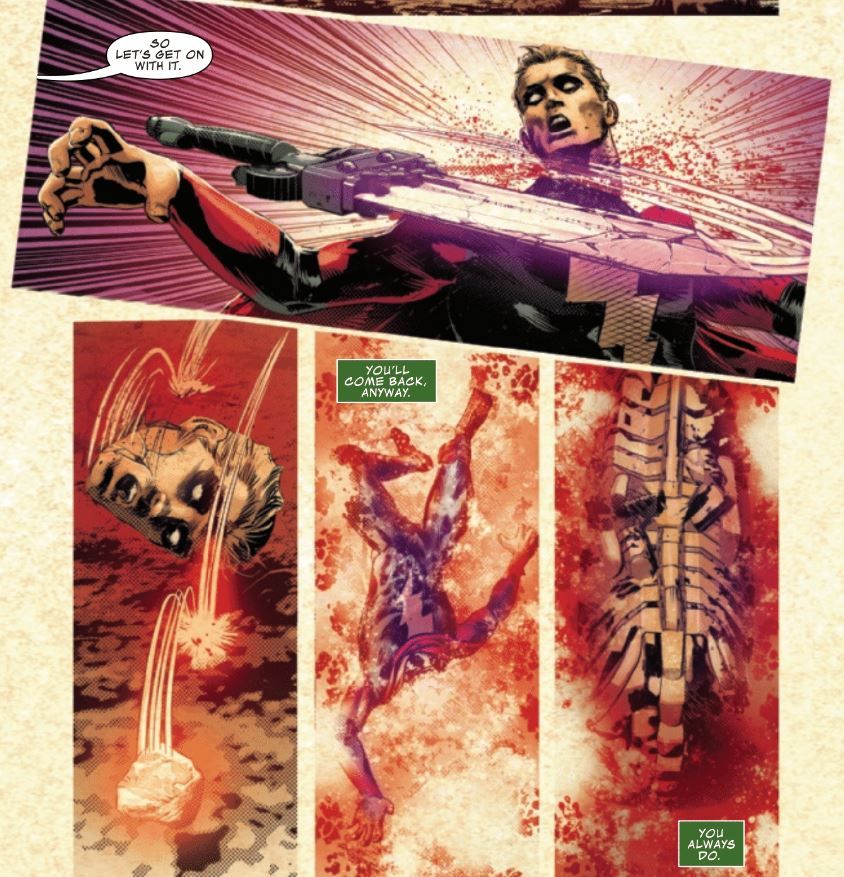SPOILER WARNING: The following article contains spoilers for Infinity Wars #2 by Gerry Duggan, Mike Deodato Jr., Frank Martin and Cory Petit, in stores now.
In the world of comic books, death is a revolving door. It's not that death doesn't have any meaning, it's that it's never meant to be the definitive ending that it's supposed to be. Sure, certain creative teams offer a powerful character moment that ends with the tragic death of a fan-favorite mainstay, and it can even stick for a while. But given the endless cycle of the publication of comics, and given the undying popularity of these characters, they always find a way to come back somehow. For that reason, fans now know that death bears very little weight in the medium. Whether it's Superman, Spider-Man or Wolverine, the felled superheroes will, eventually, return.
However, one of the consequences of death having so little meaning in comics is that it can be used to drive a story forward in shocking and inventive ways. That is exactly the case in Marvel's latest cosmic event story, Infinity Wars. Following a Prime issue, Infinity Wars is only two issues in and, already, the series has featured the deaths of three major characters. What's even more surprising however is that these deaths are definitive (for the time being). And yet, they also aren't.
RELATED: Infinity Wars Just Killed Another Major Character, But Does It Matter?
A Dearly Departed Mad Titan
The biggest death so far to come out of Infinity Wars occurred in the Prime issue. There, just as Thanos was preparing to make his move on the heroes of the Marvel Universe and vie for control of the Infinity Stones, the Mad Titan was stabbed and killed by his daughter Gamora. This was surprising to say the least, given how advertised Thanos' role in the series had been. Marvel pulled a fast one on its fans, and we all fell for it. However, Thanos isn't exactly gone either. Well, make no mistake, his death was definitive.
However, the character can still be seen in Infinity Wars #2 and no, we're not talking about the scenes where we see him in flashbacks. Somehow, Gamora has started seeing Thanos. The two talk and interact. We don't yet know why this is happening, but it's happening nonetheless. Thanos may be dead, but he's still a part of the book -- at least, in some capacity. He just doesn't exactly have a physical presence anymore.
Page 2: [valnet-url-page page=2 paginated=0 text='Gamora Has Been Piling Up Kills In Infinity Wars (Sort Of)']
An Interference With Time
Then, we move on to Star-Lord, who was also shockingly killed by Gamora at the close of issue #1. As the leader of the Guardians of the Galaxy (and a star of the Marvel Cinematic Universe), Peter Quill has many fans out there who were gutted to see him fall at the hands of the woman he loves. But he wasn't dead for more than a couple of pages before Star-Lord was brought back to life. Lucky for him, Doctor Strange was in the vicinity, and the Sorcerer Supreme used the Time Stone in his possession to turn back time and save Quill from Gamora's blade.
Some will say that Quill's death was simply undone, erased thanks to time-travel. While part of it is true, Doctor Strange also explains to Star-Lord that, in another universe, he is most definitely dead -- forever. Thankfully for Quill, however, this universe, and its timeline, was just changed. Considering those facts, one can argue that Star-Lord did die. And, in that now alternate timeline, he will remain dead. However, thanks to Doctor Strange, he is also very much alive.
See? It all makes sense!
See You Soon, Adam Warlock
Finally, this brings us to the last (and latest) casualty in Infinity Wars: Adam Warlock. In issue #2, the keeper of the Soul Stone is also killed by Gamora (what can we say, she's on a rampage). With a swift strike of her Infinity-powered sword, the deadliest woman in the galaxy slices Warlock's head clean off. "You'll come back anyway," Gamora says at the same time, "You always do." Almost as soon as he is gone, Warlock is back in his regenerative cocoon, which will bring the character back to life after an incubation period. Such is one of the special abilities of Warlock, who can die but who always, ultimately, comes back.
In this case, the death of Warlock did happen. His head got cut off and he died. But thanks to his powers, he will return once more. Again, Infinity Wars features a surprising death, albeit one that automatically paves the way for that same character to return.
Three issues, three deaths. In Infinity Wars, the meaning of death is upheld, and yet it is also side-stepped. The deaths have weight to them, but the characters that fell are still a part of the main story. It just goes to show the lengths Gamora is willing to go to in order to control the Infinity Stones. Even Gamora herself knows that dead doesn't necessarily means dead. After all, at the end of issue #1, right before she stabs Peter Quill -- a man she is supposed to love -- she says: "Nothing ever dies, Peter."
It's true of comic books, and it's true of Infinity Wars. Nothing ever really dies.
KEEP READING: Infinity Wars Rewrites a Major Aspect of Thanos’ Continuity




